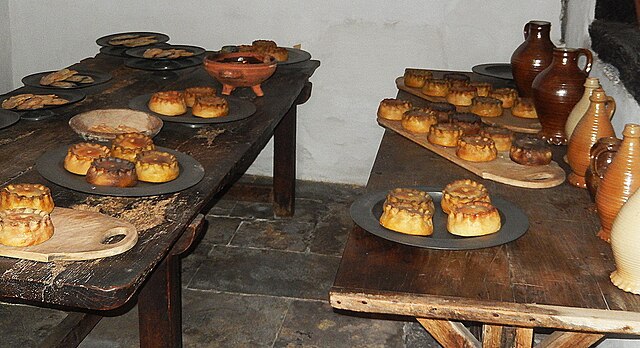The Forme of Cury is an extensive 14th-century collection of medieval English recipes. Although the original manuscript is lost, the text appears in nine manuscripts, the most famous in the form of a scroll with a headnote citing it as the work of "the chief Master Cooks of King Richard II". The name The Forme of Cury is generally used for the family of recipes rather than any single manuscript text. It is among the oldest extant English cookery books, and the earliest known to mention olive oil, gourds, and spices such as mace and cloves.
A page from late 14th-century manuscript in the John Rylands Library, Manchester
English cuisine encompasses the cooking styles, traditions and recipes associated with England. It has distinctive attributes of its own, but is also very similar to wider British cuisine, partly historically and partly due to the import of ingredients and ideas from the Americas, China, and India during the time of the British Empire and as a result of post-war immigration.
Internationally recognised: afternoon tea in traditional English style in Philadelphia, Pennsylvania
Recipes from The Forme of Cury for "drepee", parboiled birds with almonds and fried onions, and "mawmenee", a sweet stew of capon or pheasant with cinnamon, ginger, cloves, dates and pine nuts, coloured with sandalwood, c. 1390
Thomas Dawson's The Good Huswifes Jewell was first published in 1585.
Pies have been an important part of English cooking from Tudor times to the present day.




